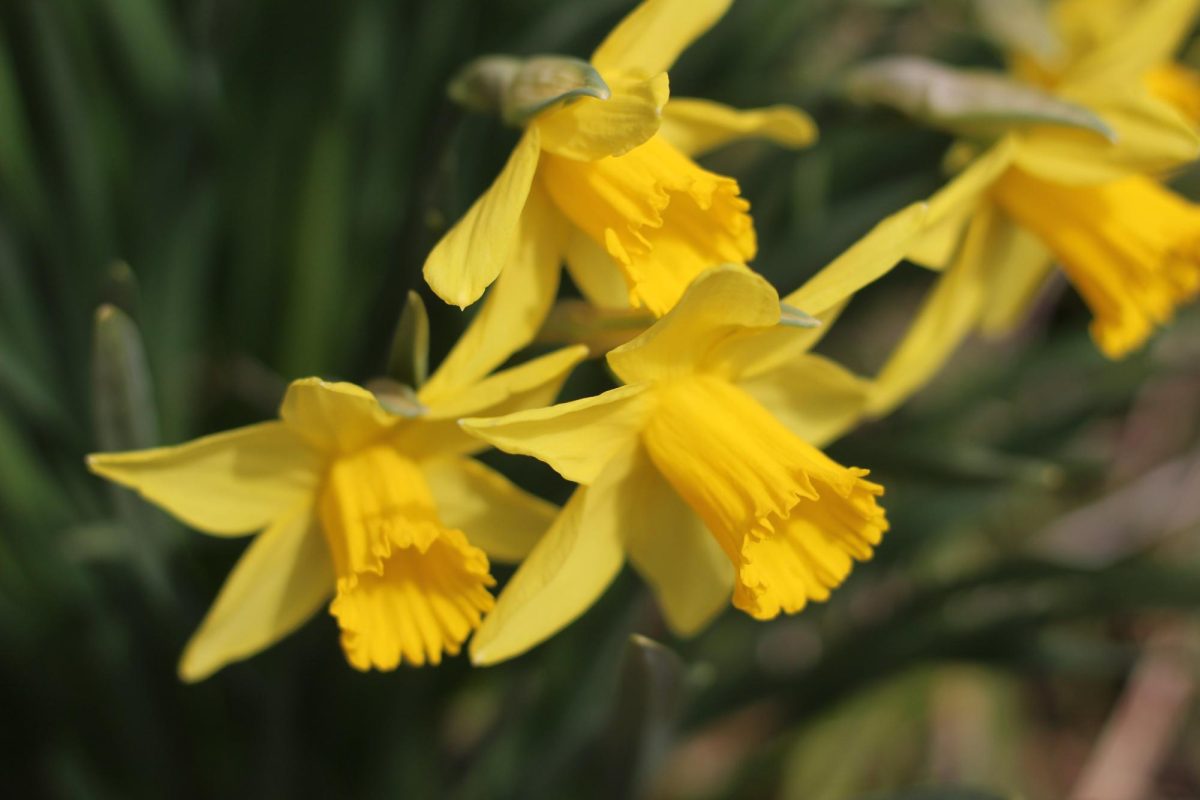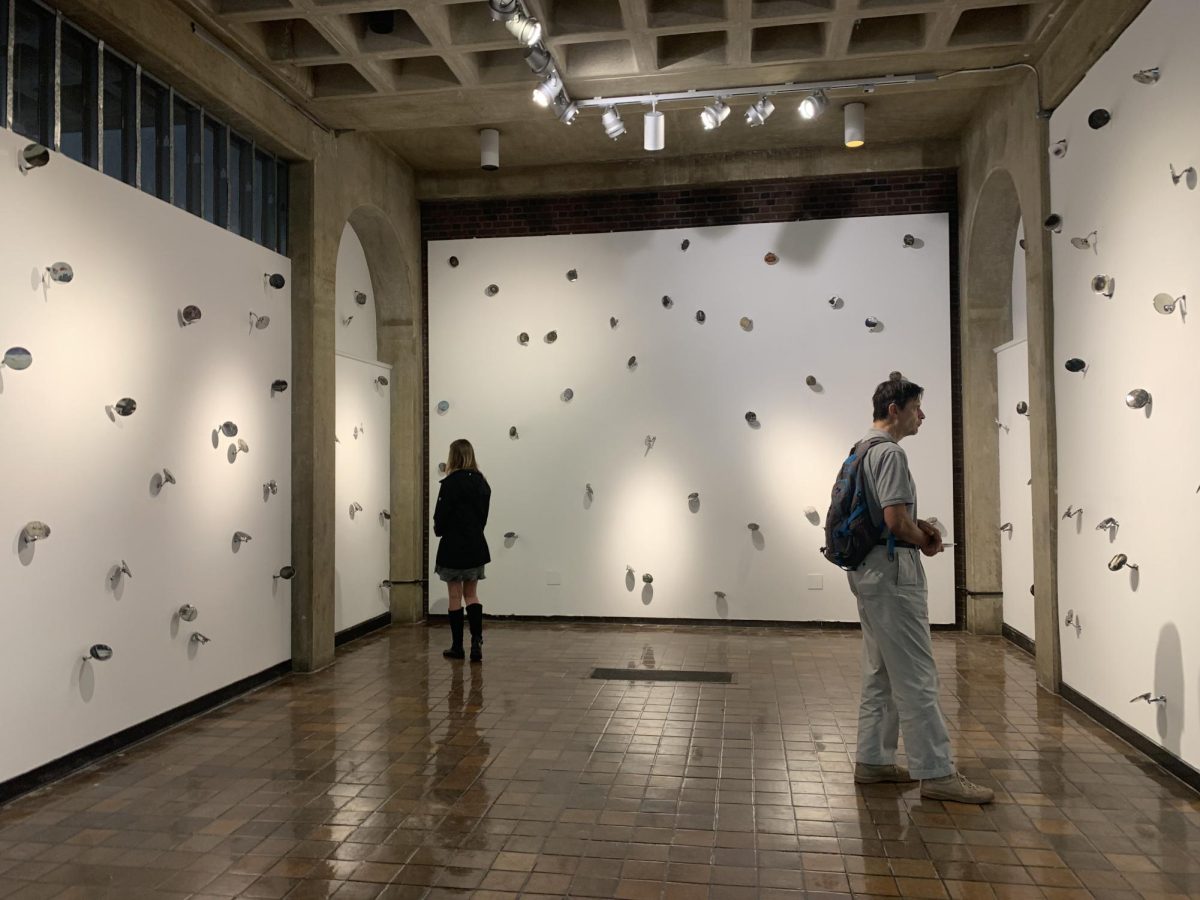 The University of Massachusetts’ Herter Art Gallery is currently featuring a group show titled “Flower Power.” The exhibit explores the ways in which flower imagery can be used to find meaning in nature.
The University of Massachusetts’ Herter Art Gallery is currently featuring a group show titled “Flower Power.” The exhibit explores the ways in which flower imagery can be used to find meaning in nature.
Historically, flower and plant representations have held symbolic value in artworks. During the Medieval and Early Renaissance periods, flowers served as a symbol of religious truth. Ivy often symbolized eternal life and a peach symbolized truth and salvation. From the 1600s through the 1800s, flower paintings became popular, as they symbolized the ideals of the Romanticism era.
Due to various art movements, contemporary society possesses symbols and ideas regarding different objects. For instance, after the Victorian movement, red roses came to symbolize love, yellow roses stood for joy and friendship, while pink roses represented happiness.
The purpose of this exhibit is to display the current symbolic value flowers hold in contemporary artwork. Throughout the centuries, each movement has had flowers as a constant and this theme still exists today.
“Flower Power” features 15 artists including Zeke Berman, Michael Coblyn, Jeanette Cole, Robert Cumming, Butt Johnson, Rosanne Retz, Richard Yarde, Hanlyn Davies, Lisa Lindgren, Dale Schlappi, Deb Karpman, Geoffrey Miller, John Roy, Al Souza, and Jerry Kearns. The artists work with different media and each puts his or her own spin on the theme.
Some works use flowers in an obvious manner. For instance, the flowers are large, vibrant, and encompass the entire portrait. Others; however, emphasize a different focal point but have nature as the underlying subject. For instance, Lisa Lindgren’s “Untitled 2” uses mixed media in a collage style. She uses paper cut-outs from prints to create petals with a human hand cut-out as the flower stem. Birds with human hands as feet surrounds the “flower” focal point.
Geoffrey Miller’s piece, “Column,” uses acrylic on Masonite. The piece comprises flowers as the main focal point and subject. His work reflects the title, in that it features a column shaped work with various squares of flowers. The piece begins at the top with extremely bright flowers and a bright background while the middle has very light, faint flowers. The bottom of the column uses dark acrylic.
Zeke Berman’s piece features a more complex idea. “Blue Flower” features two blue flowers in glass placed inside a dark cave. A piece by Michael Coblyn, “Hiding the Moon with Smoke,” uses pigment print and arched paper to display a stern, perplexed man. Alongside, you can see the man’s body in a mirror image. A shower curtain and a large flower are displayed in the corners.
Julie Heffernan’s “Self Portrait as Thing in the Forest,” is a long piece that uses human beings as the main focal point. This oil painting features a dark forest with fire bursting at the ground. As the fire goes up the page, it contributes to the illusion that it has morphed into flowers as it hits the trees. Sitting in the forest are two nearly identical women, wearing different dresses that are joined together to give the impression that they are in the same body. The flowers in these paintings clearly supplement the main theme.
Robert Cumming uses cut paper as his medium to create black and white flowers along the border of the piece. The focal point in the portrait is a plant hanging by a thread.
A UMass studio art professor, Hanlyn Davies, uses an outside-looking-in theme in her piece entitled “Inside/Outside (Collapse).” The piece features a window displaying the view outside. Soil is a main image in this piece, perhaps signifying growth or newness.
The most unique piece, Al Souza’s “The White Glove’ is made entirely out of puzzle pieces. Appropriately, all of the segments feature floral motifs. It is pieced together in a collage fashion; however, certain areas pop out in a more three-dimensional style.
This exhibit uses contemporary art work to perpetuate the long standing tradition of using flowers as a symbol, a theme that still exists today but perhaps in a new form. “Flower Power” opened in the Herter Art Gallery (West) September 10 and will continue through October 9.
Lisa Linsley can be reached at [email protected]






